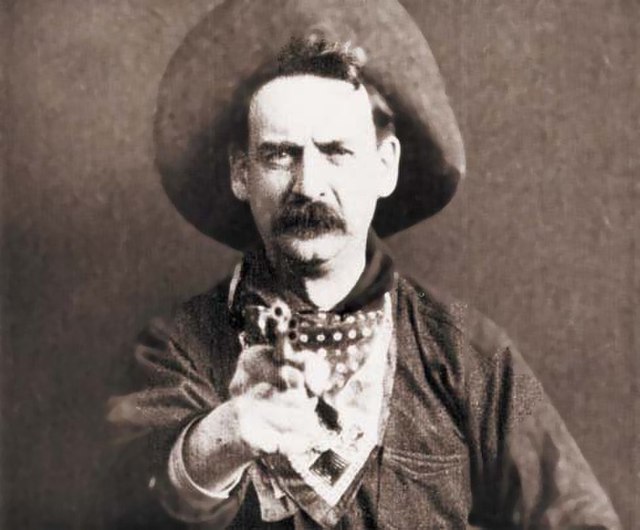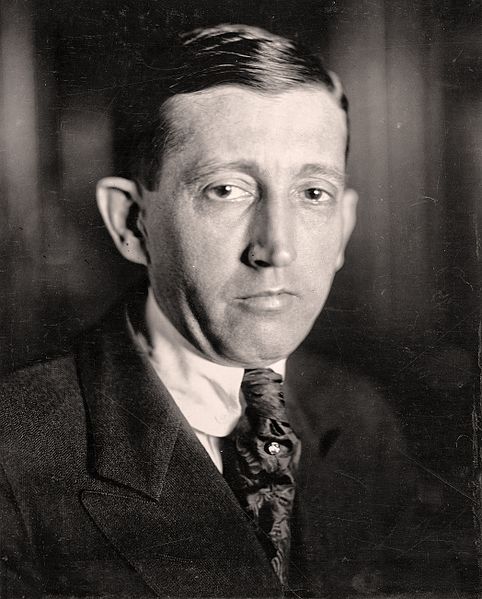The Motion Picture Production Code was a set of industry guidelines for the self-censorship of content that was applied to most motion pictures released by major studios in the United States from 1934 to 1968. It is also popularly known as the Hays Code, after Will H. Hays, president of the Motion Picture Producers and Distributors of America (MPPDA) from 1922 to 1945. Under Hays's leadership, the MPPDA, later the Motion Picture Association of America (MPAA) and the Motion Picture Association (MPA), adopted the Production Code in 1930 and began rigidly enforcing it in 1934. The Production Code spelled out acceptable and unacceptable content for motion pictures produced for a public audience in the United States.
Thou Shalt Not, a 1940 photo by Whitey Schafer deliberately subverting some of the Code's strictures
A famous shot from the 1903 film The Great Train Robbery. Scenes where criminals aimed guns at the camera were considered inappropriate by the New York state censor board in the 1920s, and usually removed.
Actor Boris Karloff as Doctor Frankenstein's creation in the 1931 film Frankenstein. By the time the film's sequel, Bride of Frankenstein, arrived in 1935, enforcement of the Code was in full effect, and the doctor's overt God complex was forbidden. In the first picture, however, when the creature was born, his mad scientist creator was free to proclaim "Now I know what it feels like to be God!"
Some directors found ways to get around the Code guidelines; an example of this was in Alfred Hitchcock's 1946 film Notorious, where he worked around the rule of three-second-kissing by having the two actors break off every three seconds. The whole sequence lasts two and a half minutes.
William Harrison Hays Sr. was an American politician, and member of the Republican Party. As chairman of the Republican National Committee from 1918 to 1921, Hays managed the successful 1920 presidential campaign of Warren G. Harding. Harding then appointed Hays to his cabinet as his first Postmaster General. He resigned from the cabinet in 1922 to become the first chairman of the Motion Picture Producers and Distributors of America. As chairman, Hays oversaw the promulgation of the Motion Picture Production Code, which spelled out a set of moral guidelines for the self-censorship of content in American cinema.
Will H. Hays
1922 editorial cartoon by Cy Hungerford illustrating the perception that Hays was coming to rescue the movie industry.






